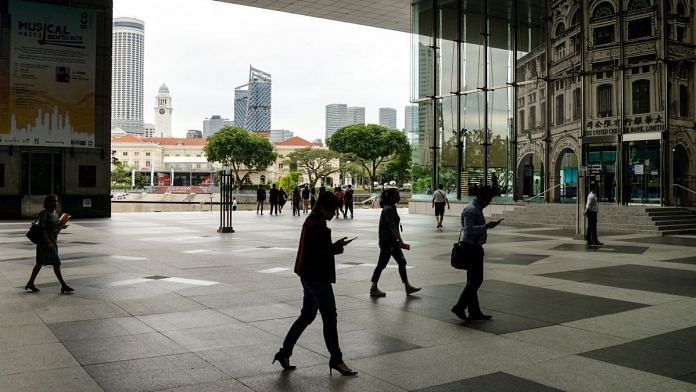Singapore: Singapore extended support for older workers in the aging island nation, as the current leadership prepares to hand over to a new generation in coming years.
The retirement age will be gradually raised to 65 from 62, Prime Minister Lee Hsien Loong said Sunday in his annual National Day Rally speech. The re-employment age, where employers must offer work in the same organization, will rise to 70 from 67.
The city-state also will increase pension-contribution rates for workers so that by 2030, any worker age 60 or below will get the full rate, Lee said.
The government is looking ahead to elections that must be held by 2021, while Lee — son of the country’s founding leader — is preparing to hand power to new leaders “in the next few years.” The measures build on support Lee’s government already is giving to older citizens, including S$6.1 billion ($4.4 billion) it set aside this year for a fund that includes subsidized health care for those in their 60s.
The pledges come as the trade-dependent nation grapples with fears of a global recession and an intensifying rivalry between its two biggest trading partners. In the past week, the government slashed its economic outlook for 2019 to a range of zero to 1% growth, predicting what could be its most sluggish year in a decade.
Living Longer
The government will help businesses adjust to higher costs associated with the pension changes, as employers are required to match their staff’s retirement fund contributions. Singaporeans now have the longest life expectancy in the world at nearly 85 years, Lee said in his speech, adding that there are 1,300 centenarians among a population of less than 6 million.
Following the address, the opposition Singapore Democratic Party said Lee had failed to show that citizens actually wanted to work longer.
“Many Singaporeans had hoped to hear bold and dynamic proposals to deal with the challenges facing us in a rapidly changing world with huge geopolitical challenges,” the SDP said in an emailed statement. “Unfortunately, I think we were disappointed.”
Minister of Manpower Josephine Teo said in March a higher retirement age will encourage workers and employers to invest in upgrading skills and adapting jobs for older workers. Raising the re-employment age aims to give companies more flexibility to reset work terms — like salary and job scope — to deal with business uncertainties.
Lee also emphasized the threat low-lying Singapore faces from climate change. It could cost S$100 billion or more over the next century to prepare the country to deal with rising sea levels, hotter temperatures and more intense rainfall, Lee said, adding that the effort was as critical as military defense to the country’s survival.
“Everything else must bend at the knee to safeguard the existence of our island nation,” Lee said. “With climate change, we know for sure that sea levels will rise.”
Rising Seas
All new developments will have to be built on platforms at least four meters (13 feet) above sea level, while critical infrastructure like the upcoming airport terminal and port must be built at least five meters above sea level, Lee said.
The government will also consider building polders to protect existing low-lying areas — a solution employed in the Netherlands — and reclaiming land for offshore islands, Lee said.
The focus on climate change is a natural evolution from the priorities espoused by Singapore’s founding leader, the late Lee Kuan Yew, who ensured that the city-state was flush with greenery and that its design allowed residents to use underground passages to avoid the blistering heat and tropical downpours.
The government announced last month it would invest S$400 million over the next two years to upgrade drainage systems. That would add to the S$1.8 billion already spent since 2011 to boost flood resilience, said Masagos Zulkifli, minister for the environment and water resources.
The opposition SDP said the climate-change initiatives from Lee, who has been in power since 2004, were insufficient. The SDP also called for nationalizing education and reducing inequalities in the school system.
“It is not clear that the PAP has the ability to come up with practical solutions to the challenges we will face in the future,” SDP officials wrote, referring to the People’s Action Party that has led Singapore since independence in 1965.
Other highlights from Lee’s speech:
- Plans for the 2,000-hectare Greater Southern Waterfront will include public and private housing as well as office space; one of the first developments will have enough land for 9,000 housing units when the current lease for a country club there expires in two years.
- The government will more than double the S$1 billion or so it spends per year on early-childhood education, raise subsidies to middle income parents and increase financial aid for college students.
Also read: Singapore’s stock dispute with India ends, but creates new uncertainties



